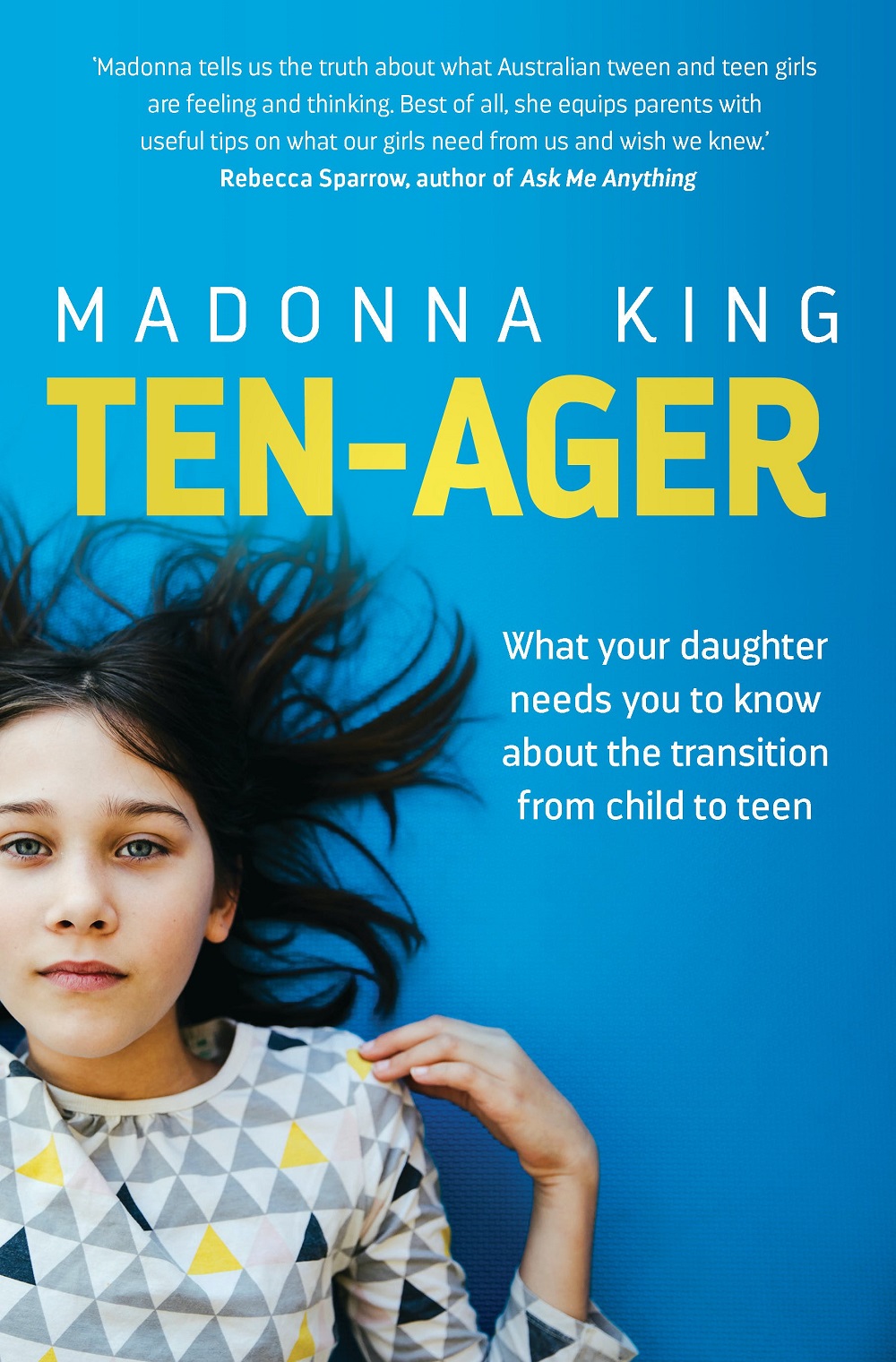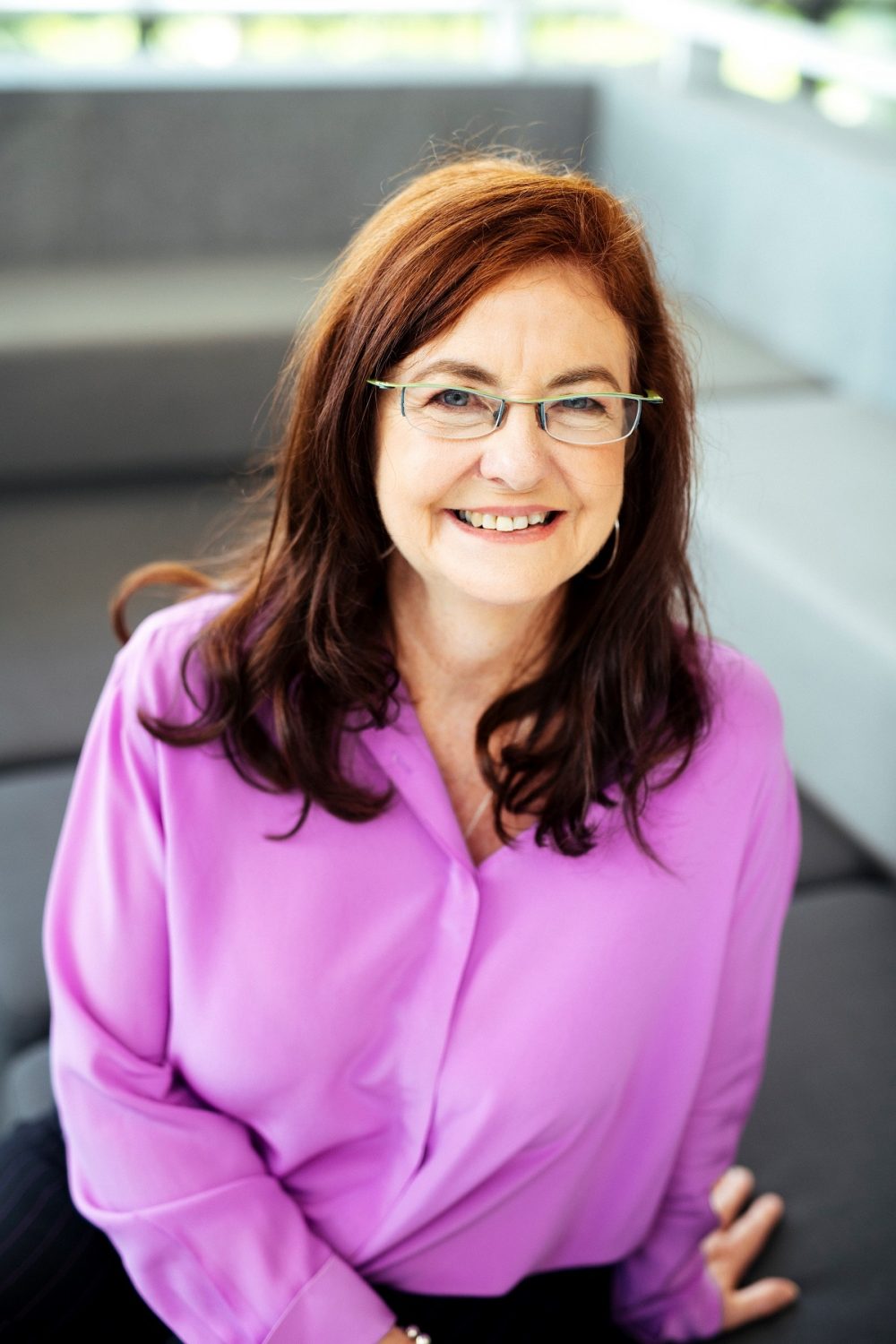
In her new book, Madonna King finds the transition from childhood by girls is happening earlier than ever before. She tells Shane Green what parents need to know.
Supported by extensive interviews and expert views, author Madonna King has listened to parents and explored the sometimes troubled world of girls at 10, going through a development stage unlike any generation before.
She spoke with Shane Green about the book that resulted, Ten-ager: What Your Daughter Needs to Know About the Transition from Child to Teen.
'Why can't she be 10?'
Ten-ager follows your successful Being 14, and Fathers and Daughters. Can you talk about how the book and your focus on girls at 10 came about?
A couple of years ago I wrote a book called Being 14, about that tricky age. I followed that with Fathers and Daughters. In both of those I interviewed hundreds and hundreds of tween and teen girls to try and find out what they were thinking and what they wanted us – their parent and educators – to do. Over time I got heaps of emails (mainly from Mums) saying my 10 or 11-year-old is acting more like a 14-year-old. Could she just be advanced? Or why can’t she be 10? Or why are all her friends on social media. So I started to look at 10-year-old girls and where they are at – and that led to Ten-ager. Ten is the new teen. Ten is now, in many cases, 13.
A plea to be listened to – and not judged
A real strength of your research is the hundreds of interviews you conduct with girls, their parents and educators…
Yes all up for the three books – Ten-ager, Fathers and Daughters and Being 14 – I consulted about 2000 girls, 400 dads, 1600 mums and then dozens of school principals and school counsellors, psychologists and parenting experts. I’m a journalist; not an educator or psychologist. My aim was to get the girls to talk about those things they are really struggling with – friendships, body image, school work, anxiety, puberty etc – and then take that to experts. And boy did I learn a lot!
I must say that to read some of the responses are very moving, sometimes heartbreaking. Many comments seem to be a cry for help or understanding, both from girls and their parents….
Mostly I’d say it’s a plea for us to listen to them, and with less judgement. Sometimes we might seem to listen, but we are really telling them what to do. As they described it, often they want to work that out but they want us to hear what they are saying. That’s especially the case with Mum. The number one request of girls for their Dads is to do something with them – go for a bike ride, or go camping, jump on the trampoline or walk or go for a swim. I know I’m right with all of this – not because the books are popular but because the same themes came up hundreds and hundreds of times.
The invisible signs of puberty
You speak with George Patton, Professor of Adolescent Health Research at the University of Melbourne about this team’s work and 7-10-year-olds being an under-researched area…
Wow, what a talented guy. But I think the real message here is that the early stages of puberty – which can happen six or so years before a girl’s first period – are as invisible as they are profound. That time, when we can’t see what’s happening under the bonnet, is so important to how she will fare later on and also the time when we can possibly change the trajectory. This was one of my huge learnings. Ages 6 to 12 are so, so important and yes they are under-researched. Professor Patton has done ground-breaking research on the invisible signs of puberty and how difficult that can be for many of our children. I urge you to read that chapter or google him and find out as much as you can. He also gave me a great analogy in the book about how you might develop the next generation’s Ash Barty. And it’s not by putting a tennis ball in her hand at three; it’s about how you work with her when she’s seven or eight.

Friendships the biggest issue for girls
You write that there is a single issue above all others mentioned by parents and girls, it is friendships – finding real friends and keeping them…
Why are friendships so damn hard to navigate at 10 – for girls, not boys? I think our girls don’t actually know how to BE friends. They can nominate the attributes of a good friend – the top two answers were someone who was kind and funny – but putting it into practice is much harder. We need to help them: set boundaries and provide the words to explain that. We need to convince them that making a friend is not something done at lunchtime; it’s takes time and work and forgiveness! We’ve learnt to forgive friends when the argument is not as big as the friendship; we need to teach our girls that too!
One of the particularly pressing issues that emerges is the influence of popular culture. It’s not just being constantly connected with smart devices, but how they are interpreting what they are consuming…
Yeah, I’m not really concerned by what our girls are watching and listening to or reading. In fact, I think it might be better for them than some of the stuff that lured us in. But I do worry about HOW they are listening (constant connectivity, no downtime, music and TV in their pocket) and the power of the social media influencer. When one person can get four million likes on an Instagram post, we now they have power over many children. I also worry about how many girls believe those doctored perfect photos filling their computer screens. A photo of a faraway island has been touched up. So has the picture of the teen model they want to copy! They don’t yet have the critical thinking skills to assess that.
The anxiety caused by the pandemic
You were working on the book during the pandemic and lockdowns. Of course, it’s far from over, and we are still trying to assess the impact of children and adults alike. What did you see among the girls and parents you spoke with?
So much that I can’t explain here. We know Australia is fairly safe. We know there’s a vaccine on the horizon. We know there hasn’t been mass deaths here. But children just hear the constant coronavirus update on TV, radio and internet news. It’s constant and it’s full of uncertainty. That is really weighing on some kids who can’t sleep at night, or whose anxiety has skyrocketed. Lockdown was good for some; shy girls or girls on the spectrum seemed to blossom a bit, for example. Another silver lining, according to the girls, was how much more they saw their Dad! There’s a lesson. There’s also been lessons for schools in having more flexibility in timetables etc. But we shouldn’t underestimate how big this continues to be for our children, who don’t understand vaccines and science and viruses like we might.
The one message for parents...
If you have one message for the parents of a 10-year-old girl, what would it be?
Teach them to run their own race, not the race of the girl next to them. Teach them that everyone ends up at the finish line; it’s how you get there that counts. I think so much of the anxiety we are seeing (and there is an epidemic in anxiety amongst tween and teen girls) comes from them trying to fit in with friends, or other girls. We need to teach them that each of them has their own journey, their own way of doing things, their own beautiful individuality. I am sure that would help resilience and friendship and anxiety and their educational potential and a dozen other things!
Like this post? Please share using the buttons on this page.

About Madonna King
Madonna King is an author, speaker, advisor and journalist. She is the author of 12 books, including the bestselling Being 14, Fathers and Daughters and now Ten-ager. She is also the biographer of Australian of the Year Professor Ian Frazer and former treasurer Joe Hockey.
She advises governments and corporations on understanding teenage girls.
You can find out more on Madonna King’s website.
Ten-ager is published by Hachette Australia.
Subscribe to The Parents Website


